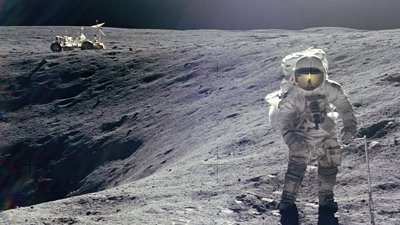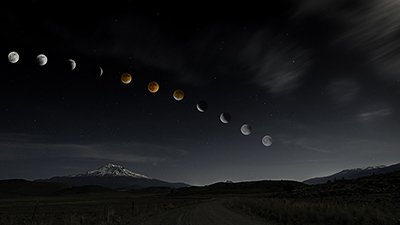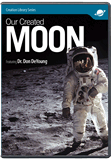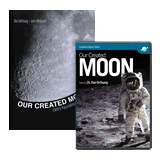Moon and Earth Originally One Body?
ScienceNOW: “Moon’s Craters Hold Clues to the Lunar Interior” Was the moon formed separately from the earth, or were the two originally one body?
Some compromising Christians claim Genesis 1 can be neatly reconciled with secular science’s claims about the origin of the universe, the solar system, the planet earth, and life. But, as we’ve noted elsewhere, the Bible clearly teaches that the earth was created before the sun, which flat-out contradicts the old-age view.
Olivine is common in the earth’s mantle, but it has hardly turned up on the moon.
What about the moon? Within the old-age camp, the dominant perspective on the moon’s formation is that the primordial earth was struck by another astronomical body, fracturing the earth and causing a lump of mass that would become the moon to spin off into orbit. Because, according to that model, the moon was once part of the earth, scientists predict a correlation in the physical composition of the two bodies.
But is such a correlation present? Scientists continue to study materials recovered as far back as the Apollo moon missions to answer that question, and data gathered by Japanese moon mission Kaguya is the latest information scientists are analyzing. Specifically, Kaguya has turned up evidence of the mineral olivine. Olivine is common in the earth’s mantle, but—contradicting the evolutionary explanation of the moon’s formation—it has hardly turned up on the moon.
Based on spectral analysis, however, Kaguya has found olivine on the edges of major craters in places where the moon’s crust is thin. Scientists reporting on the data in Nature Geoscience suggest that objects colliding with the moon broke through the crust, pushing hidden olivine from the moon’s mantle or lower crust upward. “The finding is exciting [because] for the first time there appears to be evidence for rocks exposed on the surface of the moon that do not originate from the upper lunar crust,” explained University of Cologne geochemist Carsten Münker.
Does that settle the case in favor of the lunar impact hypothesis? It certainly does not: for one thing, there are other explanations for the presence of olivine on the moon; for another, even some old-age scientists reject the lunar impact hypothesis. For creationists, the lunar impact hypothesis requires an unbiblical perspective not only on the age of the earth and the moon, but also on the historical characteristics of the earth when the moon was formed—covered with a molten surface (as evolutionists assert), or with water, land, and plants (as Genesis 1:1–19 teaches)?
For more information:
Remember, if you see a news story that might merit some attention, let us know about it! (Note: if the story originates from the Associated Press, Fox News, MSNBC, the New York Times, or another major national media outlet, we will most likely have already heard about it.) And thanks to all of our readers who have submitted great news tips to us.
(Please note that links will take you directly to the source. Answers in Genesis is not responsible for content on the websites to which we refer. For more information, please see our Privacy Policy.)
Recommended Resources

Answers in Genesis is an apologetics ministry, dedicated to helping Christians defend their faith and proclaim the good news of Jesus Christ.
- Customer Service 800.778.3390
- Available Monday–Friday | 9 AM–5 PM ET
- © 2025 Answers in Genesis








